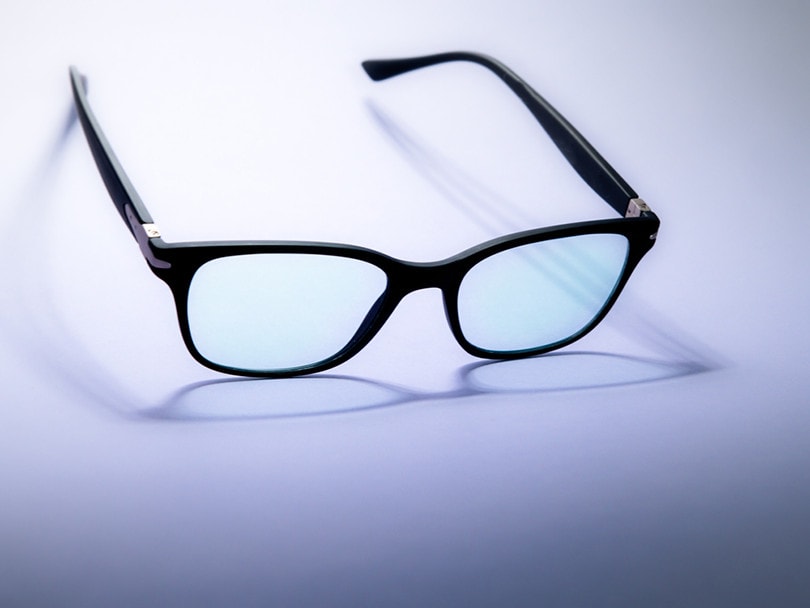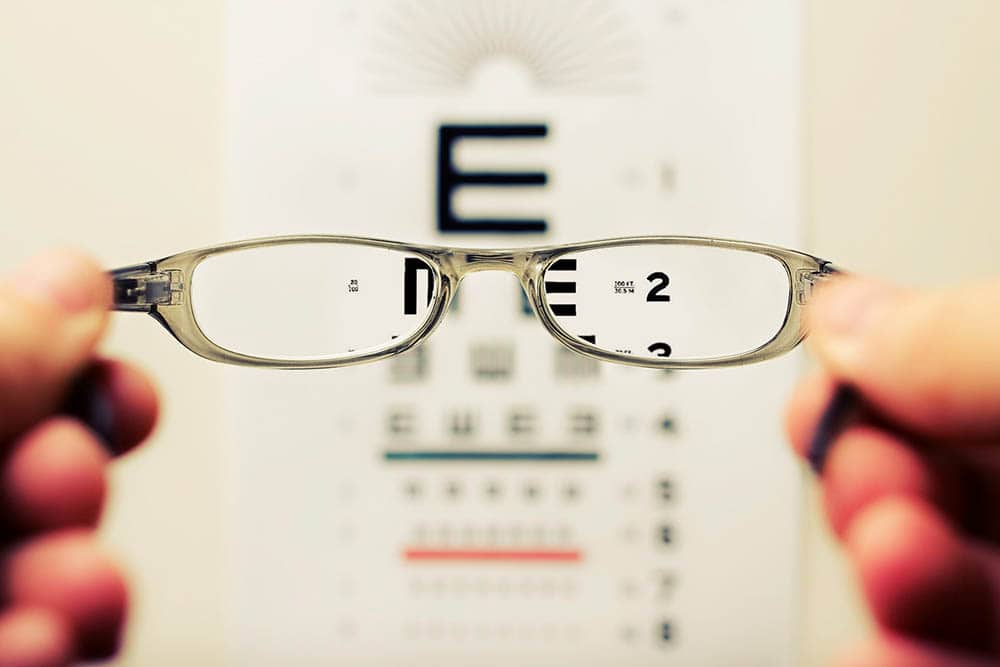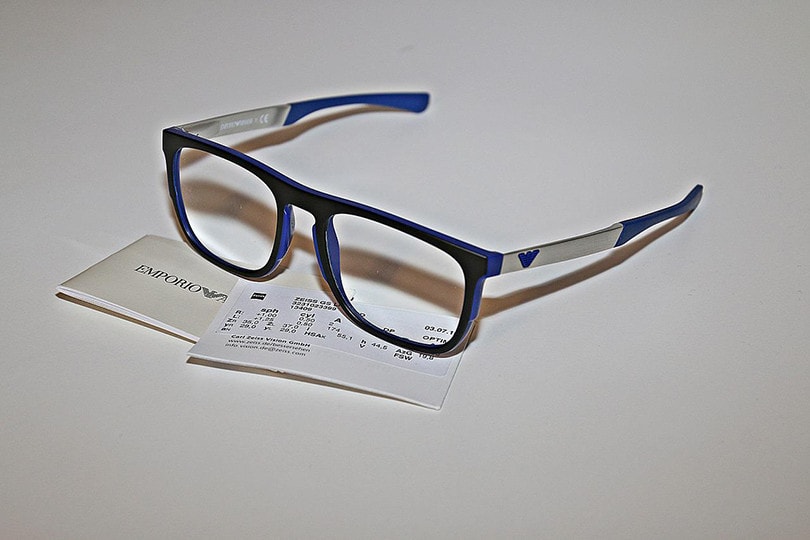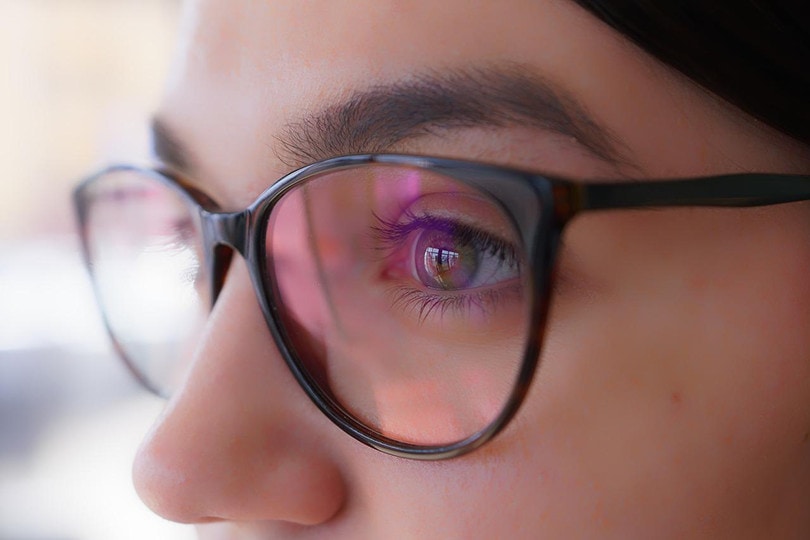6 Types of Reading Glasses
Last Updated on

You may need reading glasses if you’ve been having difficulty reading due to obstacles such as eye strain, headaches, and blurred vision. These symptoms can worsen if you don’t protect your eyes with vision correction.
If you suspect that you have presbyopia¹, it’s crucial to consult an ophthalmologist. Depending on your vision, they may prescribe you a pair of reading glasses. Unfortunately, there are several types of reading glasses, so it can be troublesome to find out which one is right for you.
The type of vision correction you require is the most influential factor for the different types of reading glasses. Other factors include lens type, frame type, face shape, etc. Keep reading to find out which reading glasses you need.

Types of Reading Glasses

The type of reading glasses depends on the lens magnification level and vision correction method. Here are the six types of reading glasses to know about, including bifocals, full magnification, full frame, half frame, blue-light filters, and more.
Bifocal Reading Glasses
Bifocal reading glasses are half clear and half magnified. The top part of these glasses has no magnification, while the bottom part is magnified appropriately. As a result, readers can benefit from the magnification while looking down and reading and experience their normal vision while looking up and afar.
Traditional bifocal glasses have a primarily clear and magnification-free lens with a small crescent of magnification at the base. Progressive no-line bifocal reading glasses are another common type featuring a clear top part of the lens, with the strength of the magnification gradually increasing.
This gives the reader multiple focus points, while the no-line factor makes it ideal for sunglasses. Bifocal reading glasses are ideal for readers that require no magnification for long-distance viewings, such as watching the television.

Fully Magnified Reading Glasses
Unlike bifocal reading glasses, fully magnified reading glasses feature lenses with the magnification of your choice throughout. Readers use fully magnified reading glasses for temporary use, such as reading or looking at details. You can choose the magnification level from 0x–8x.
Full Frame Reading Glasses
One of the most common types of reading glasses is full frame reading glasses. These glasses sit on the bridge of your nose and take up your vision entirely.
You can find full frame reading glasses with bifocal or fully magnified lenses or blue light blocking filters. However, if you try to look at long-distance views with full frame reading glasses, everything will appear blurry.
Half Frame Reading Glasses
Half-frame reading glasses are the opposite of full frame reading glasses. These glasses are meant to sit lower on your nose and leave the top part of your vision unobscured by the frame or lens for long-distance viewing.
Then, the lower part of your vision is viewed through the prescription lens, which has the magnification of your choice. For example, half-frame reading glasses typically have a shorter lens height and are worn near the tip of your nose.
Readers only need magnification for up-close viewing but don’t want to repeatedly remove and put on their reading glasses.

Blue Light Blocking Reading Glasses
Blue-light-blocking reading glasses are ideal for readers that stay in front of screens most of the day, including computers, laptops, phones, etc. Unfortunately, these screens emit harmful blue light rays that can weaken your vision further, and blue-light-blocking reading glasses have filters that prevent up to 99% of these rays.
As a result, readers can benefit from reduced headaches, blurred vision, eyestrain, and other symptoms. While blocking blue light rays, these reading glasses also feature the magnification of your choice. However, these glasses are not restricted to fully magnified lenses and can also be found in bifocal or magnification-free options.
Reading Sunglasses
Readers that need vision correction and UV protection also use reading sunglasses. These reading glasses come in handy during your outdoor reading activities or anything that requires attention to detail.
Reading sunglasses are also available in bifocal and polarized options, most of which feature anti-reflective coatings. However, most readers find that reading sunglasses only serve as useful on rare occasions. But, if you’re an avid reader at the beach, they might become your best friend.

Reading Glasses Buyer’s Guide
The power, lens type, and frame are the three main factors when buying the perfect pair of reading glasses. Here’s a complete buyer’s guide to getting the reading glasses that suit your eyes best.

Reading Glasses Power
You must first consider the reading power while buying reading glasses. Finding your reading power can be tricky, but it’s crucial to maintain accuracy if you want to correct your vision and prevent eye strain, headaches, or blurriness in the future. Reading strength, reading magnification, and diopter are a few other words used for reading power.
While buying reading glasses, you’ll be able to pick the magnification level, typically ranging from 0x–8x. These magnifications are available in +25 or +.50 increments. If you don’t already know your reading power, it’s best to get an annual eye exam from a trusted eye doctor.
You can also use power finder tools to determine your reading glasses’ power. These tools help you find your reading power by analyzing your previous prescription and current age. You may also use a printable diopter chart¹ to check your power.
However, it only offers results for vision requiring up to +3.25 power, so it’s best to consult an eye doctor if you think you need a stronger power. The reading power of your glasses also depends on what type of vision correction you need.
In addition, your reading power can increase or decrease depending on what measures you take to correct your vision. That’s why getting an annual eye exam and keeping your reading glasses updated is essential.

Reading Glasses Lens Type
The next thing to consider is the lens type, as there are several options to choose from. Depending on the type of vision correction you need, you may pick bifocals, full-magnification, blue-light filters, and sunglasses.
Bifocal lenses are ideal for those who plan on wearing their reading glasses 24/7 but don’t need magnification. On the other hand, fully magnified lenses are a better option for those that only put on their glasses while reading.
Blue-light-blocking lenses benefit those with longer screen times throughout the day, while readers that want to read in the sun should opt for reading sunglasses. Ultimately, it all depends on how often you plan on using your reading glasses and where you’ll use them.
If you plan to use your reading glasses during the day, we won’t recommend opting for blue light filters. That’s because your eyes still need blue light during the day to moderate your sleep cycle. In addition, reading sunglasses are only an additional pair to have on hand in case you want to read in the sun; they’re not a practical fit for everyday or all-day wear.

Reading Glasses Frame
Lastly, you must consider the frame of your reading glasses. It’s essential to put some thought into this decision to ensure comfort as long as you wear these reading glasses. There are some tips you must keep in mind while picking the frame of your reading glasses.
Your face shape is the most influential factor when buying reading glasses. They should be a comfortable fit without being too tight or too loose. If it keeps slipping from your nose, it’s too loose. If it leaves indentations on your temples after being worn for an hour or so, it’s too tight.
Your frame style should complement your face shape too. For example, if you have a round face, opt for rectangular frames. If you have a square face, opt for round glasses, and so on. Of course, black is the classic option people tend to choose for their reading glasses. But if you plan on going for a colored frame, take your skin tone into consideration. If you have a warm skin tone, go for light tortoise, brown shades, gold or honey, beige, and olive-green frames.
If you have a cool skin tone, silver, black, dark tortoise, pink, purple, blue, mauve, and gray frames would fit you better. Lastly, you’ll need to consider your lifestyle before picking a pair of reading glasses. You’ll find options for athletes, gamers, business-oriented people, and more.
How to Know When You Need Reading Glasses
Most of the time, you’ll realize you need reading glasses when it gets hard to focus on things that were previously easy for you to look at. The main sign is that you’ll find yourself squinting quite a lot, which you should try to resist as it only worsens your eyesight.
The next symptom is that you’ll start holding books differently or closer to your face. You may also start experiencing frequent headaches and blurry vision, especially while reading or looking at a screen.
The last symptom is that you’ll always find yourself turning the light on, having no tolerance for dark rooms. Those with presbyopia constantly need brighter light to feel adjusted in a room or detect anything.
In any of these cases, it’s best to go to an eye doctor instead of opting for the local pharmacy to sell you a cheap pair of reading glasses. This will only worsen your eyesight. In addition, if you’re over 40 years old and find yourself holding books, newspapers, or magazines an arm’s length away from you, it’s time to get reading glasses.

Visiting the Eye Doctor for Prescription
It’s essential that you visit the eye doctor when you suspect you have presbyopia. The first reason is that they’ll accurately prescribe the type of vision correction you need and detail a reading power with the help of an eye exam.
The second reason is that presbyopia often has the same symptoms as more serious eye problems. So, to make sure you’re not passing something concerning as bad eyesight, it’s best to let an eye doctor decide what the problem is.
Most of these eye problems begin with bad vision and can even result in a loss of vision, so it’s always better to be safe than sorry. One of the most important things to avoid is picking up a random pair of reading glasses from the local pharmacy.
Frequently wearing glasses with an unsuitable reading power can significantly worsen your vision, resulting in headaches, migraines, or eye strain. Ready-to-wear reading glasses are typically one-size-fits-all, which is why they may not be the perfect, tailored fit.
In addition, they’re not as strong as you need them to be, offering magnification only up to 3x.

Final Thoughts
The condition of slowly losing your eye’s ability to focus is known as presbyopia, requiring reading glasses or Lasik surgery as a solution. Those that need reading glasses have a variety of options to choose from.
That includes bifocals, full magnification, full frame, half frame, blue light filters, and reading sunglasses. However, the main thing to consider is the reading power, which can be determined with the help of an eye exam, a power finder tool, or a printable diopter.
Once you’ve figured out your reading power, you can utilize our buyer’s guide to figure out the lens type and frame type which suits you best.
Featured Image Credit: Stereo Lights, Shutterstock
About the Author Jeff Weishaupt
Jeff is a tech professional by day, writer, and amateur photographer by night. He's had the privilege of leading software teams for startups to the Fortune 100 over the past two decades. He currently works in the data privacy space. Jeff's amateur photography interests started in 2008 when he got his first DSLR camera, the Canon Rebel. Since then, he's taken tens of thousands of photos. His favorite handheld camera these days is his Google Pixel 6 XL. He loves taking photos of nature and his kids. In 2016, he bought his first drone, the Mavic Pro. Taking photos from the air is an amazing perspective, and he loves to take his drone while traveling.
Related Articles:
How to Clean a Refractor Telescope: Step-by-Step Guide
How to Clean a Telescope Eyepiece: Step-by-Step Guide
How to Clean a Rifle Scope: 8 Expert Tips
Monocular vs Telescope: Differences Explained (With Pictures)
What Is a Monocular Used For? 8 Common Functions
How to Clean a Telescope Mirror: 8 Expert Tips
Brightfield vs Phase Contrast Microscopy: The Differences Explained
SkyCamHD Drone Review: Pros, Cons, FAQ, & Verdict
